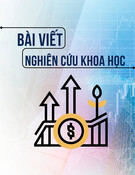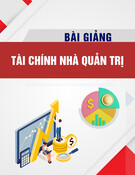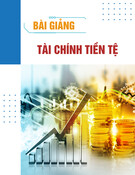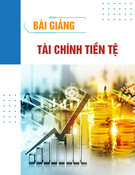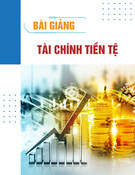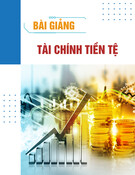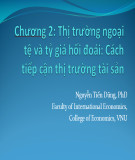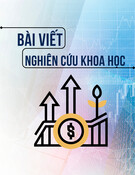
39 Journal of Economic and Banking Studies
No.7, Vol.4 (1), June 2024 pp. 39 - 48
© Banking Academy of Vietnam
ISSN 2734 - 9853
The impact of capital structure on financial performance
- an empirical study at hotel firms in Hanoi
Truong, Thanh Hang - Dang, Thu Ha
Faculty of Accounting – Auditing, Hanoi University of Industry, Vietnam
Corresponding Authors
E-mail address: truongthanhhang@haui.edu.vn (Truong, T.H.), dangthuha@haui.edu.vn (Dang, T.H.),
[Postal Address: No.298 Cau Dien Street, Bac Tu Liem District, Hanoi, Vietnam]
1. Introduction
The capital structure (CS) determination
stands out as one of the pivotal choices
made by any organization. These deci-
sions are formulated prior to a company’s
establishment or in response to an urgent need
for funding to fulfill its capital investment
decisions. The financial manager of a com-
pany must evaluate the merits and drawbacks
of various funding avenues, rendering the CS
decision an ongoing endeavor that must be un-
dertaken whenever the company seeks capital
for its endeavors.
CS refers to the amalgamation of equity and
debt employed in funding the company. CS
refers to how an organization is financed by
combining long-term capital (common stock,
preferred stock, debt, bank loan, convertible
loan stock....) and short-term debt such as bank
overdrafts and creditor transactions. CS has
been a significant concern in financial econom-
ics ever since Modigliani and Miller (1958)
demonstrated that when markets are perfect,
there are no costs of financial distress and no
transaction costs, then decision making CS
and FP are not related. Under current condi-
tions, the decision on CS composition is quite
difficult for companies and thus it becomes
an important research area for researchers in
accounting and finance. The overall goal of
companies is to reduce the cost of capital and
maximize value with relevant CS decisions.
Therefore, the relationship between CS and
the performance of companies has always
been one of the areas of interest and attracting
researchers worldwide.
The growth rate of the system of tourist ac-
Chronicle Abstract
Article history The article examines the impact of capital structure (CS) on financial per-
formance (FP) of hotel firms. A sample size of 72 of 3 - 5 star hotel firms in
Hanoi city, Vietnam in a period of 3 years from 2016 to 2019 has been taken
to analyze. Firm FP is measured by ROA, ROE, ROS. The study which applies
quantitative methods along with the support of EVIEWS software points
out a statistical significance relationship. Firstly, the CS has a contrariwise
impact on ROA but no effect on ROE and ROS. Secondly, among control
variables (asset structure, expenditure ratio, revenue), the expenditure ratio
is the only one showing a contrariwise impact on ROS and the rest has no
statistical significance.
Received
Revised
Accepted
06th Jan 2024
30th Apr 2024
10th May 2024
Keywords
Capital structure,
Financial performance,
Hotel firm,
ROA, ROE, ROS
DOI:
10.59276/JEBS.2024.06.2652





